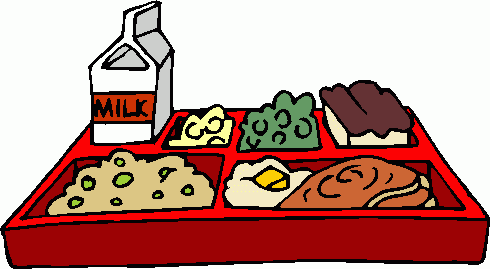Where’s my lunch?
Schools around the country are struggling with supply chain issues as they try to feed students.

March 1, 2022
Have you noticed issues with school lunches? Like so many parts of life, the Covid-19 pandemic is also affecting the food available to schools and students. This is a complicated issue that started with supply chain problems and has been made worse by inflation. Costs of shipping and food are currently on the rise, and the increase in prices means schools are paying more for food that may or may not be available.
Serving lunch at school is a complicated process that involves a lot of parts. Food has to be grown, raised, and/or produced, then shipped to distribution centers. From there, schools place orders for large quantities of food products that are shipped to schools on semi-trucks. This process is the supply chain. The supply chain is easily disrupted when workers are sick or when prices increase. The Covid-19 pandemic has caused these disruptions all over the world, and we are feeling the effects at school
Schools across the country have experienced similar school lunch issues. Food items, plastic silverware, and disposable trays are in short supply. In some districts, food staff have had to go to local grocery stores to find products that they cannot get delivered, especially food for students with food allergies. Food staff are constantly adjusting their menus to make up for missing food.
We reached out to the Nutrition Services team that supports our district to see how these issues are impacting our lunches. Paula Pohlkamp, Nutrition Services Supervisor for ISD 622 and Marie Carroll, Nutrition Services Coordinator, were kind enough to answer our questions to provide more information about these complex issues.
First, we asked about the various issue impacting school lunches: production, shipping, staffing, and inflation. Pohlkamp explained that these things working together are having huge effects on districts across the country. Nutrition Services has had to emphasize reducing food waste and encouraging batch cooking to make sure that there are enough meals available. They also explained that the increased costs and lack of availability have made providing ala carte options in secondary schools impossible – no one has the products for schools to buy.
Just getting food has become the most challenging problem, Pohlkamp explained. Certain items have become very difficult to get: “Our greatest challenge has been Juice, chicken tenders, orange chicken, ketchup packets, or any packet product,” Polhkamp said. Another complication is a container shortage, which means that food is available but there are not containers to put it in. Paper and styrofoam issues mean that the district has had to change lunch trays several times just this year. Finally, the district has bought large amounts of popular items like hamburger patties and uncrustables to stay ahead of lunch demands.
One fortunate aspect is that the United States Department of Agriculture (USDA) has allowed school districts to use waivers to avoid problems with nutritional requirements. Normally, schools are required to serve a certain amount of different foods to meet these requirements; however, the difficulties with the supply chain have made this next to impossible.
Lastly, Pohlkamp encouraged families to go to the district website to access the live menu, which is updated constantly to reflect food availability. ISD 622’s communications department has worked hard to get the message out to district families. Everyone needs to understand that this is a much larger issue than just school lunches, and that schools are doing the best they can to provide nutritious meals during these challenging times.












